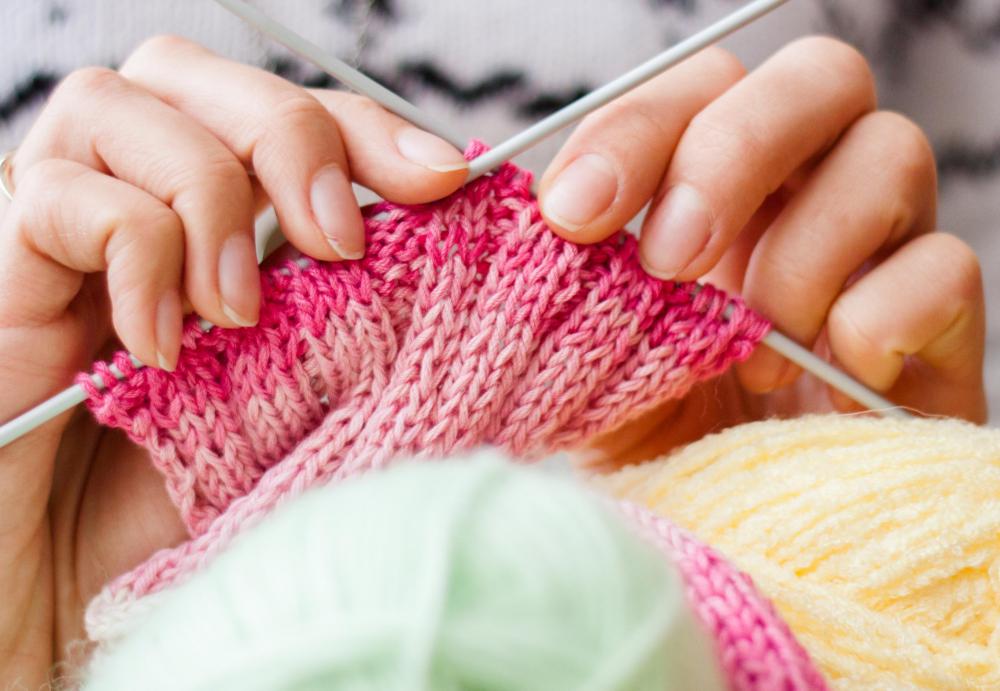At WiseGEEK, we're committed to delivering accurate, trustworthy information. Our expert-authored content is rigorously fact-checked and sourced from credible authorities. Discover how we uphold the highest standards in providing you with reliable knowledge.
What is Cable Knitting?
Cable knitting is a type of knit stitch in which one group of stitches is crossed over or under another group of stitches, changing the order in which those stitches appear on the knitting needles. Many knitters prefer to use a specialized cable needle when cable knitting, although it is possible to create cables with a spare straight needle or with no extra needle at all. Although knitting patterns might combine different types of cables with other stitches in many different ways, finished cabled fabric most commonly has a pattern of twisted ropes or braids on a background of purled stitches. Garments featuring cables are often very warm, because the cables are actually two layers of knit stitches on top of each other. For the same reason, heavily cabled garments can also add unwanted bulk to the wearer, particularly if the garment is knit in heavier yarn, or if the sleeves or midsection of the garment feature ornate cabling.
Most cable knitting requires that a knitter begin with setup rows that establish where the cables will be in the finished fabric. Often, cables are knit on a background of reverse stockinette, or all purl stitches, as purl stitches are flatter than knit stitches and allow the cables to pop out of the background. Simple cables are usually created over an even number of knit stitches, with the actual crossing of stitches occurring only once for every few rows of knitting. The rest of the time, the knitter will knit the stitches designated as cable stitches and purl the background stitches. Therefore, the setup rows of a cabled garment will resemble simple knit ribbing, with columns of knit and purl stitches alternating.

After the setup rows are complete, the knitter may choose to use a cable needle, a small wood or metal needle that is most often either hook-shaped or straight with a v-shaped divot in the center. The shape of the cable needle is designed to hold onto stitches that have been intentionally slipped off of the knitting needles while cable knitting. To make a simple cable, a knitter will slip the designated amount of stitches off the needles and onto the cable needle, then hold the cable needle to the front or back of the knitted fabric. Where the cable needle is held affects the direction in which the cable twists: front cables twist to the left and back cables twist to the right, though this is only true for right-handed knitters. With the cable needle held in front or back, the knitter will knit the next few stitches, then knit the stitches off of the cable needle, creating a twist in the knitted fabric.

Cable knitting, like ribbing, causes knit fabric to narrow at the point where the stitches are knit out of order. Knitters usually will need to cast on extra stitches for cabled garments, and also will need more yarn. Some knitters also may have problems with the purl stitches immediately following the cabled stitches being too loose, creating the appearance of small holes in the finished fabric.
AS FEATURED ON:
AS FEATURED ON:













Discuss this Article
Post your comments